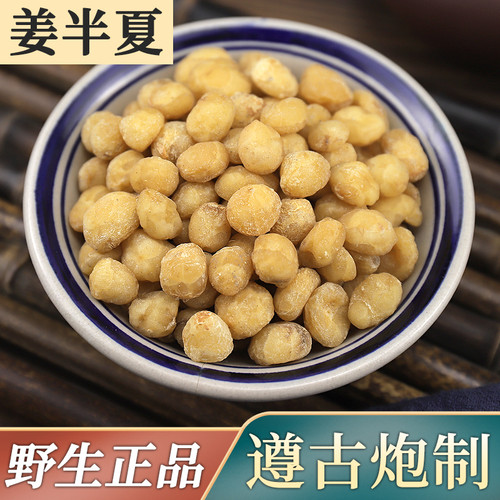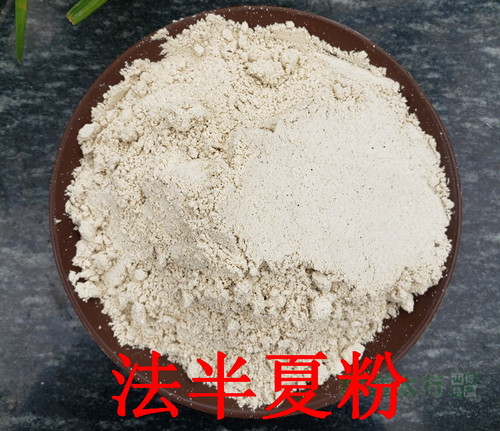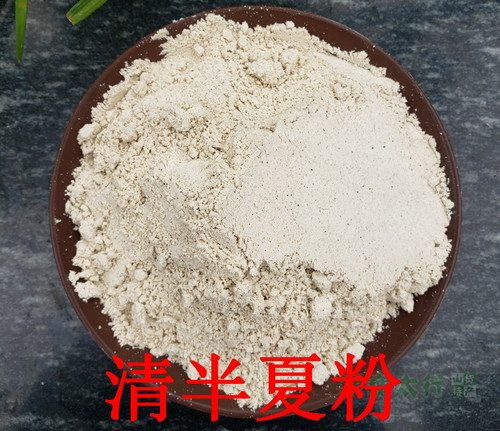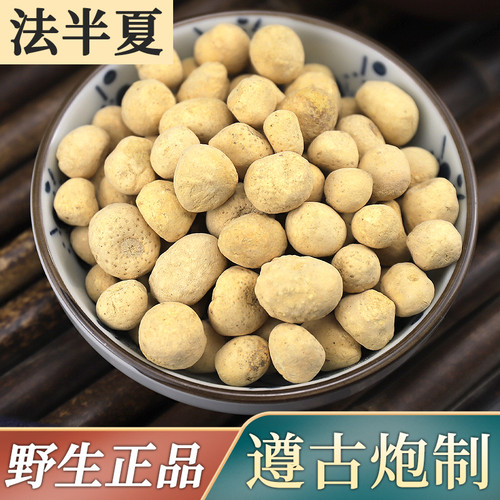Product Overview
Parts used: Dried rhizome and tuber
TCM category: Warm herbs that transform Phlegm and stop Cough
TCM nature: Warm
TCM taste(s): Pungent
Meridian affinity: Spleen Stomach Lung
Scientific name: Pinellia ternata
Use of crow-dipper rhizomes (Ban Xia) in TCM
Please note that you should never self-prescribe TCM ingredients. A TCM ingredient is almost never eaten on its own but as part of a formula containing several ingredients that act together. Please consult a professional TCM practitionner, they will be best able to guide you.
Preparation: Because the raw unprocessed herb is toxic, it is most often given in its processed form which is fried with Ginger juice.
Dosage: 3 - 12 grams
Main actions according to TCM*: Drains Dampness and reduces Phlegm. Reverses the flow of Rebellious Qi. Reduces hardenings and relieves distention.
Primary conditions or symptoms for which crow-dipper rhizomes may be prescribed by TCM doctors*: Asthma Coughing Phlegm Sputum Palpitations Headache Morning sickness Globus pharyngis Chest congestion
Contraindications*: This herb is toxic in its raw form so it should only be taken if processed by a professional. This herb should not be used by pregnant women or those with any blood disorders, especially bleeding. It should be used with caution by those with Heat and Dryness. This herb should not be used with Aconite (Fu Zi).
Common TCM formulas in which crow-dipper rhizomes are used*:
For asthma or chronic bronchitis combine crow-dipper rhizomes with ginkgo nuts (Bai Guo), ephedra (Ma Huang), perilla seeds (Zi Su Zi), coltsfoot flowers (Kuan Dong Hua), apricot seeds (Xing Ren), mulberry bark (Sang Bai Pi), baikal skullcap roots (Huang Qin) and liquorice (Gan Cao).
For vomiting and nausea caused by a Cold Stomach combine crow-dipper rhizomes with lesser galangal rhizomes (Gao Liang jiang) and dried ginger (Gan Jiang).
For an invasion of External Wind and Cold in summer with chills, fever, headache, nausea, vomiting and diarrhea combine crow-dipper rhizomes with korean mint (Huo Xiang), houpu magnolia bark (Hou Pu), perilla leaves (Zi Su Ye) and tangerine peel (Chen Pi).
For vomiting caused by turbid Dampness of the Spleen and Stomach combine crow-dipper rhizomes with korean mint (Huo Xiang) and fresh ginger (Sheng Jiang).
For food poisoning and overindulgence in rich and greasy foods or alcohol with symptoms of abdominal bloating, belching and acid regurgitation combine crow-dipper rhizomes with hawthorn berries (Shan Zha), radish seeds (Lai Fu Zi), medicated leaven (Shen Qu), tangerine peel (Chen Pi), poria-cocos mushrooms (Fu Ling) and forsythia fruits (Lian Qiao).
For Qi Stagnation caused by Cold Stomach and Spleen combine crow-dipper rhizomes with nutmeg (Rou Dou Kou), costus roots (Mu Xiang) and fresh ginger (Sheng Jiang).
For chronic Lung Deficiency coughs combine crow-dipper rhizomes with chinese plums (Wu Mei), tangerine peel (Chen Pi), fresh ginger (Sheng Jiang) and apricot seeds (Xing Ren).
For Cold stomach combine crow-dipper rhizomes with fennel seeds (Xiao Hui Xiang) and fresh ginger (Sheng Jiang).
For diarrhea and excessive salivation or drooling caused by Spleen Deficiency combine crow-dipper rhizomes with sharp-leaf galangal fruits (Yi Zhi Ren), codonopsis roots (Dang Shen), poria-cocos mushrooms (Fu Ling) and dried ginger (Gan Jiang).
For asthma with excessive phlegm combine crow-dipper rhizomes with perilla seeds (Zi Su Zi), ephedra (Ma Huang) and apricot seeds (Xing Ren).
For harmonizing Internal and External symptoms, Cold and Heat, Excess and Deficiency and treating associated symptoms (common cold, influenza, pneumonia, indigestion, nervous exhaustion, etc.) combine crow-dipper rhizomes with jujube dates (Da Zao), bupleurum roots (Chai Hu), white peony roots (Bai Shao), baikal skullcap roots (Huang Qin), ginseng (Ren Shen), cinnamon twigs (Gui Zhi), fresh ginger (Sheng Jiang) and liquorice (Gan Cao).
For asthma, cough combine crow-dipper rhizomes with lingzhi mushroom (Ling Zhi), codonopsis roots (Dang Shen), schisandra berries (Wu Wei Zi) and prepared aconite (Zhi Fu Zi).
For Damp Summer-Heat with nausea, malaria and high fever combine crow-dipper rhizomes with sweet wormwood herbs (Qing Hao) and baikal skullcap roots (Huang Qin).
For fluid accumulation with cough, wheezing combine crow-dipper rhizomes with coltsfoot flowers (Kuan Dong Hua) and schisandra berries (Wu Wei Zi).
Key TCM concepts behind crow-dipper rhizomes (Ban Xia)'s properties
In Traditional Chinese Medicine (TCM), crow-dipper rhizomes are plants that belong to the 'Warm herbs that transform Phlegm and stop Cough' category. In TCM Phlegm is a condition of Stagnation of Fluids which tends to start in the Spleen and then goes to the Lungs. If this overly accumulates it thickens and becomes pathological Phlegm. Phlegm, being a form of Stagnation, often starts as being Cool and transforms to Hot as the condition progresses. The herbs in this category are Warm in nature so they treat the early stages of the Stagnation: Cold-Phlegm and Wet-Phlegm with symptoms of wheezing, vomiting and nausea.
As suggested by its category crow-dipper rhizomes are plants that are Warm in nature. This means that crow-dipper rhizomes tend to help people who have too much "cold" in their body, although with less effect than a plant that would be Hot in nature. Balance between Yin and Yang is a key health concept in TCM. Those who have too much cold in their body are said to either have a Yin excess (because Yin is Cold in nature) or a Yang deficiency (Yang is Hot in Nature). Depending on your condition crow-dipper rhizomes can help restore a harmonious balance between Yin and Yang.
Crow-dipper rhizomes also taste Pungent. The so-called "five elements" theory in Chinese Medicine states that the taste of TCM ingredients is a key determinant of their action in the body. Pungent ingredients like crow-dipper rhizomes tend to promote the circulations of Qi and body fluids. That's why for instance someone tends to sweat a lot when they eat spicy/pungent food.
The tastes of ingredients in TCM also determine what organs and meridians they target. As such crow-dipper rhizomes are thought to target the Spleen, the Stomach and the Lung. In TCM the Spleen assists with digestion, blood coagulation and fluid metabolism in the body. The Stomach on the other hand is responsible for receiving and ripening ingested food and fluids. It is also tasked with descending the digested elements downwards to the Small Intestine. In addition to performing respiration, the Lungs are thought to be a key part of the production chain for Qi and the body fluids that nourish the body.






